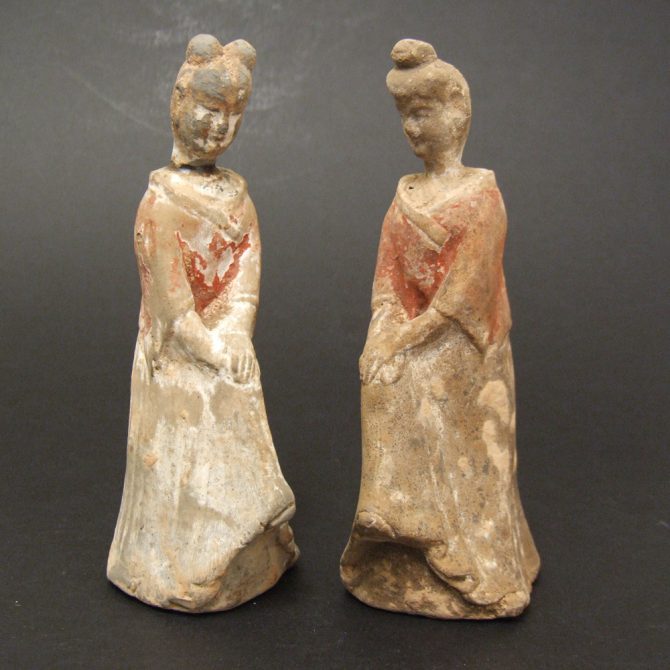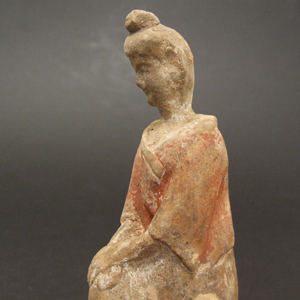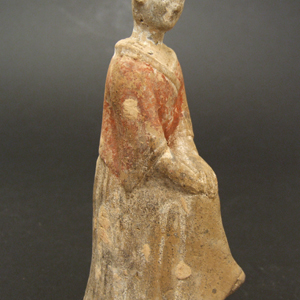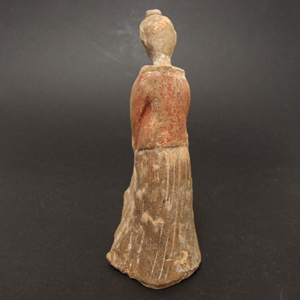
NORTHERN DYNASTIES 386 – 584 Mingqi Pottery
A Pair of Small Early Chinese Pottery Figures, Northern Dynasties 386 – 584. This `Cold-Painted` Grey Pottery Figure Shows a Women.
SOLD
- Condition
- One in good condition, one with the head re-stuck.
- Size
- Height : 16 cm (6 1/4 inches).
- Provenance
- Said to have been purchased in the 1920`s or 30`s from C.T.Loo. There are no labels however stock 21766, a similar figure from the same collection bares two Loo & Co labels to base. Ching Tsai Loo was the pre-eminent dealer of Chinese art and artefacts for the first half of the twentieth century. Starting his business in Paris, Loo was almost single-handedly responsible for introducing early Chinese art—bronzes, jades, paintings—to Western Europe and North America An American Estate.
- Stock number
- 21765
- References
- For a similar figure dated as Northern Wei from the Schloss collection see : Fine Chinese Ceramics, Paintings and Works of Art, Christie`s New York, 12 March 2000, part lot 256.
Information
The Northern Dynasties :
The Northern Dynasties include : Northern Wei Dynasty 386-535, Eastern Wei Dynasty 534-550, Western Wei Dynasty 535-556, Northern Qi Dynasty 550-577, Northern Zhou Dynasty 557-581.
Mingqi Pottery :
This piece is an example of Mingqi, objects made specifically for burial, to be taken with you to the afterlife. The `Terracotta Army` is the most famous example of this type of burial object. Mingqi objects represented people, houses, farms, granaries, livestock and indeed anything important from this world that would give you comfort and status in the next. The `Terracotta Army` were made life size and on a vast scale, reflecting the importance of the first emperor of China but most Mingqi objects were small models, far smaller than the object or indeed person they were meant to represent. Mingqi ceramics were not the only goods to appear in early Chinese tombs, objects that functioned were also buried, some of these had clearly been worn or even damaged, presumably these objects were prized possessions belonging to the deceased that might have been used on a daily basis.


